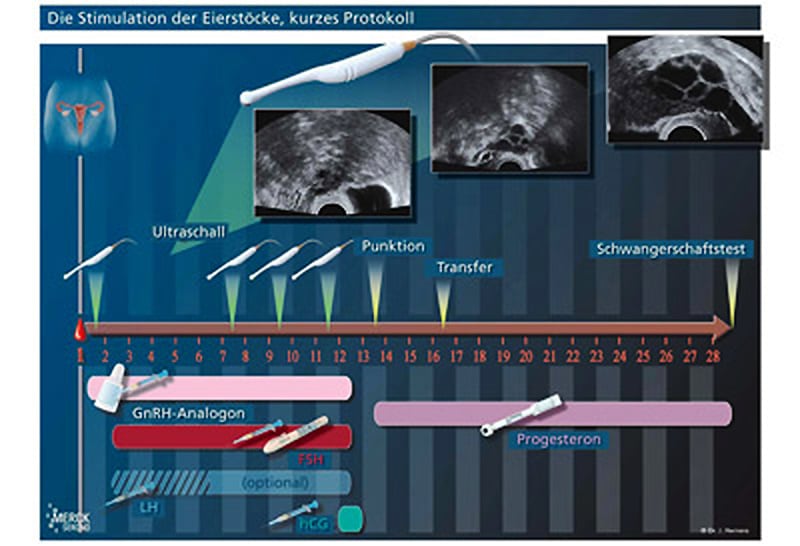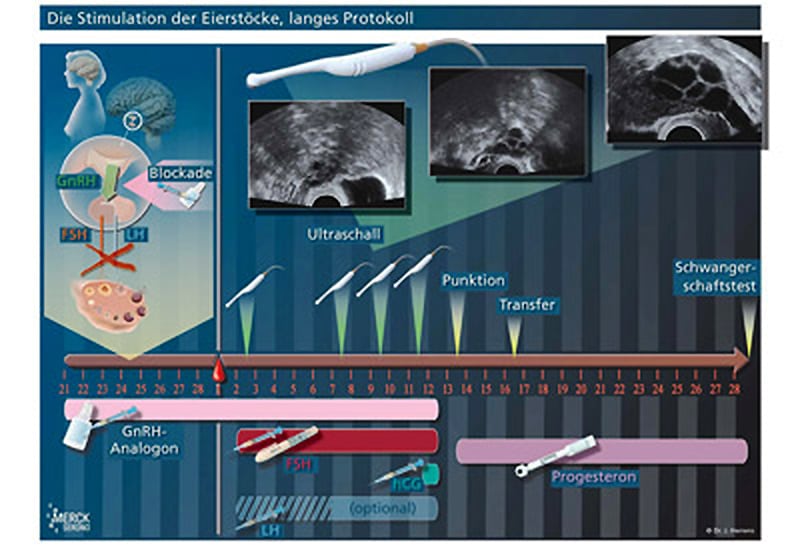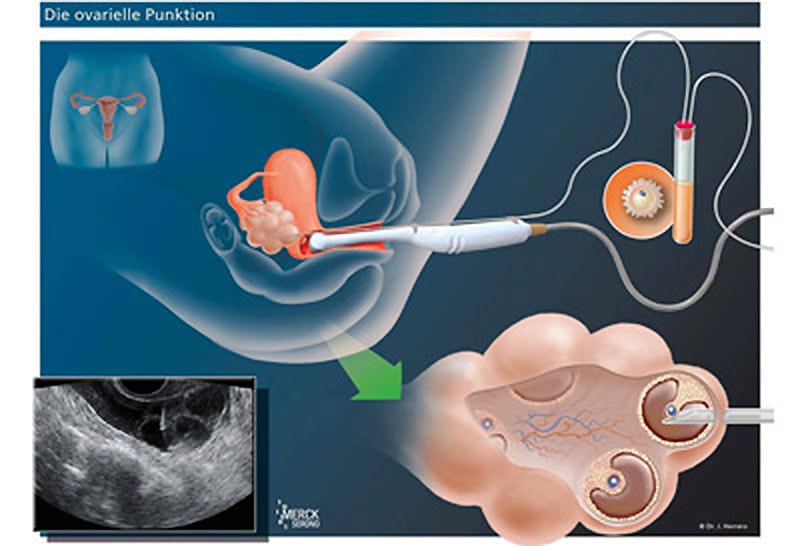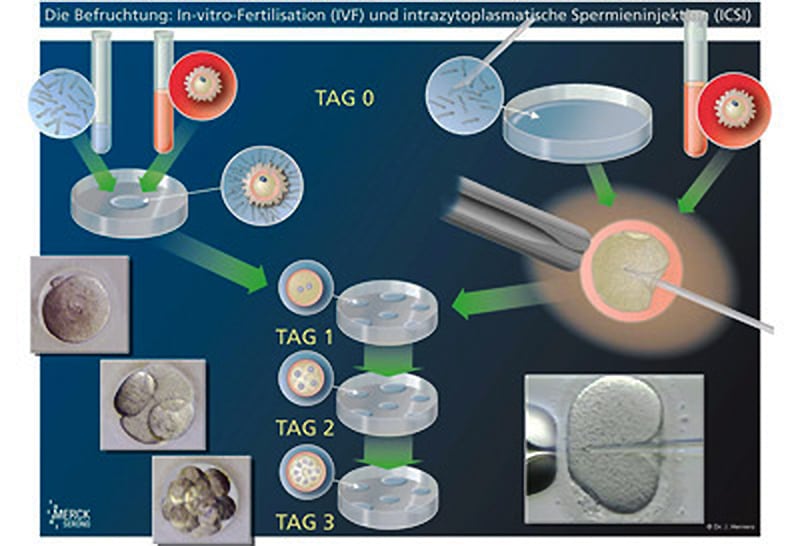IVF
IVF (In Vitro Fertilization = test tube fertilization) is typically used when the woman has a bilateral tubal occlusion. However, the partner’s limited sperm quality, the woman’s age, the couple’s level of distress, and the failure of other treatments may also lead to the decision to seek IVF.
In IVF, one or more eggs are brought together with sperm outside the body to transfer the embryo into the uterine cavity after fertilization and embryo development have occurred in order to achieve pregnancy.
Different drug combinations can be used for this purpose, they are called protocols. Which one to use depends on various factors.




There are several ways to perform IVF:
- so-called conventional IVF
- so-called Mini-IVF™
- in the natural cycle (NC-IVF)
- Donogenic IVF
If, at the same time as the female findings are present, the sperm quality is severely limited, it is possible to fertilize the individual egg with one spermatic cord at a time: ICSI
If sperm are not available, these treatments can also be performed with donor sperm (ADI).
— Diagrams: © bei Prof. Herrero, Barcelona
Conventional IVF
The procedure of conventional IVF.
Mini-IVF™
Many women who want to undergo IVF treatment are reluctant to do so because of the need for daily injections and the high cost of medication.
NC-IVF
The very first IVF treatments, including the one that resulted in the world's first baby, Louise Brown, were natural cycle test tube fertilizations.
Donor IVF
If, in addition to a significant fertility problem in the man, there is a tubal blockage in the woman or if repeated sperm transfer cycles with donor sperm have not been successful, IVF/ICSI can be performed, which is then called donogenic IVF. The procedure does not differ from the IVF/ICSI described earlier.
